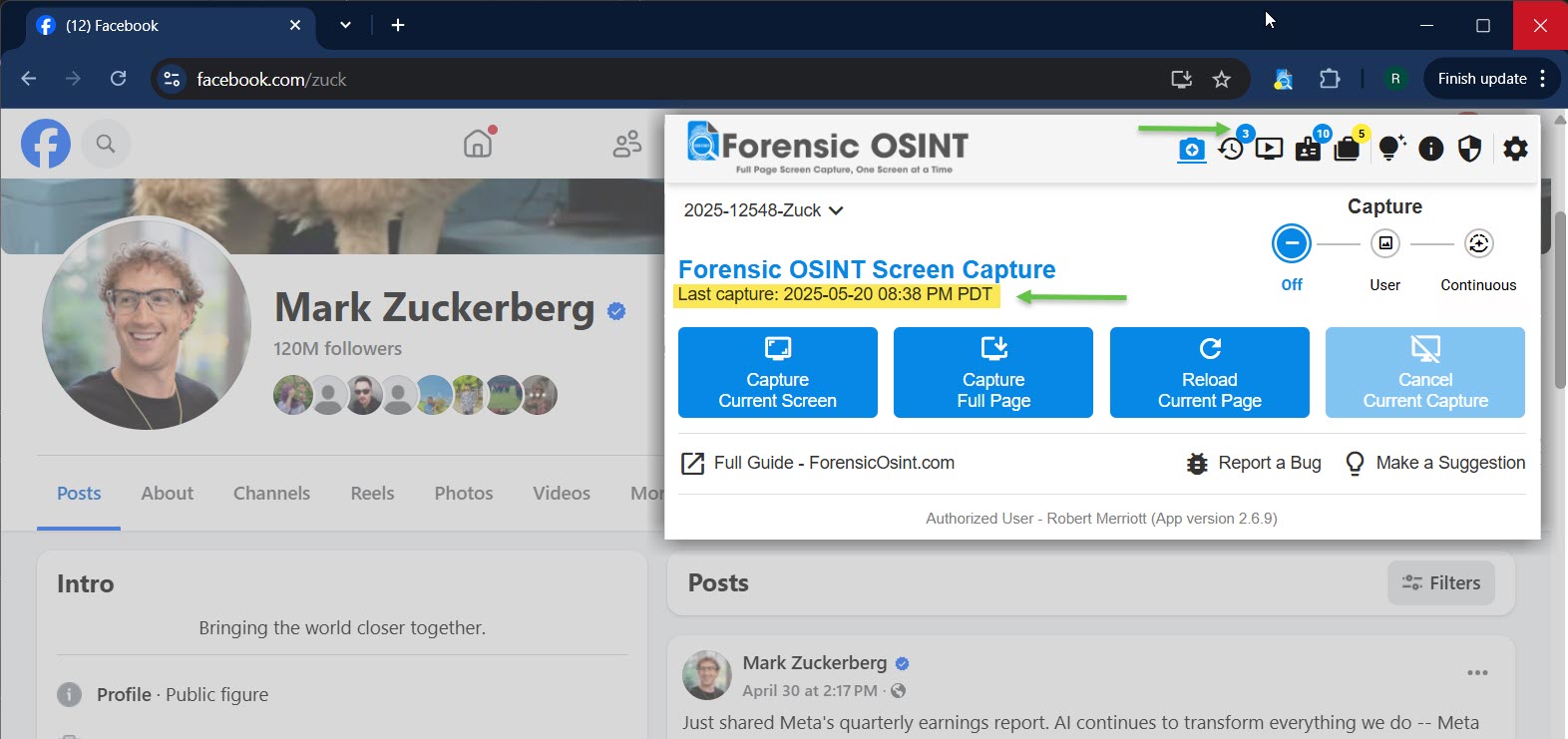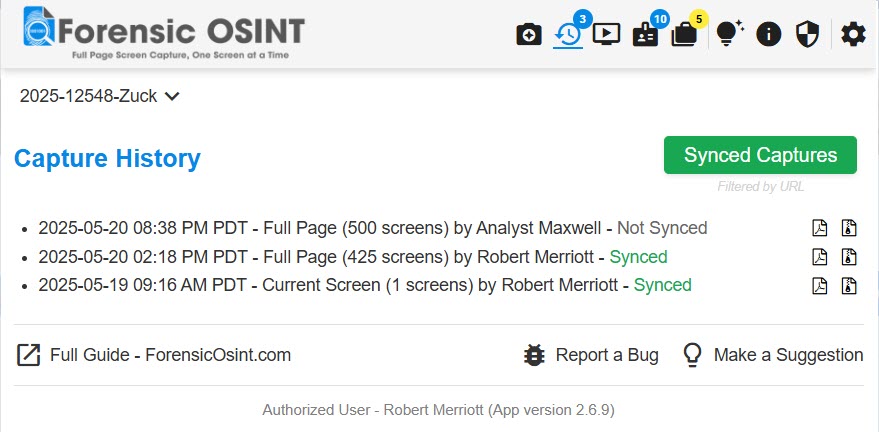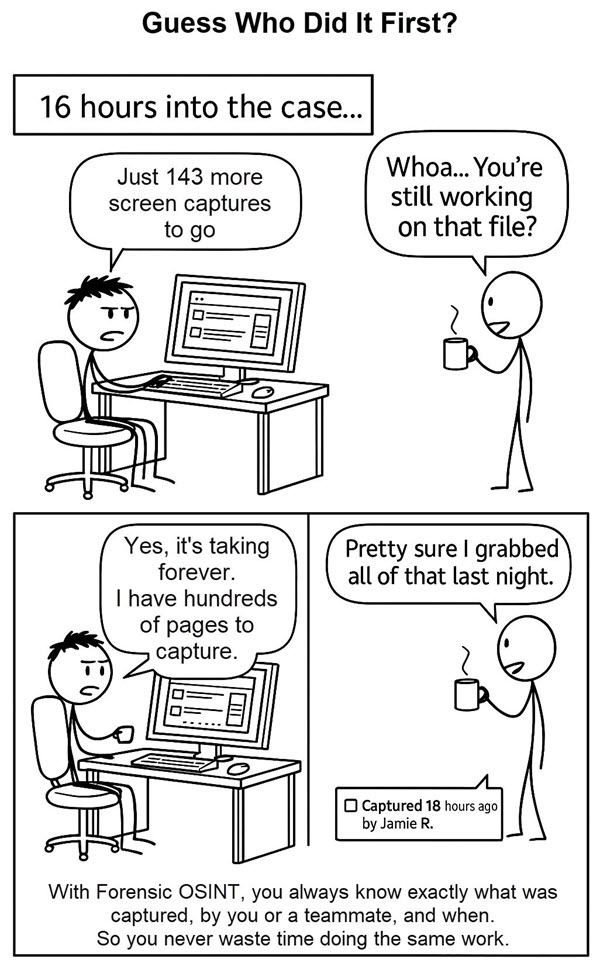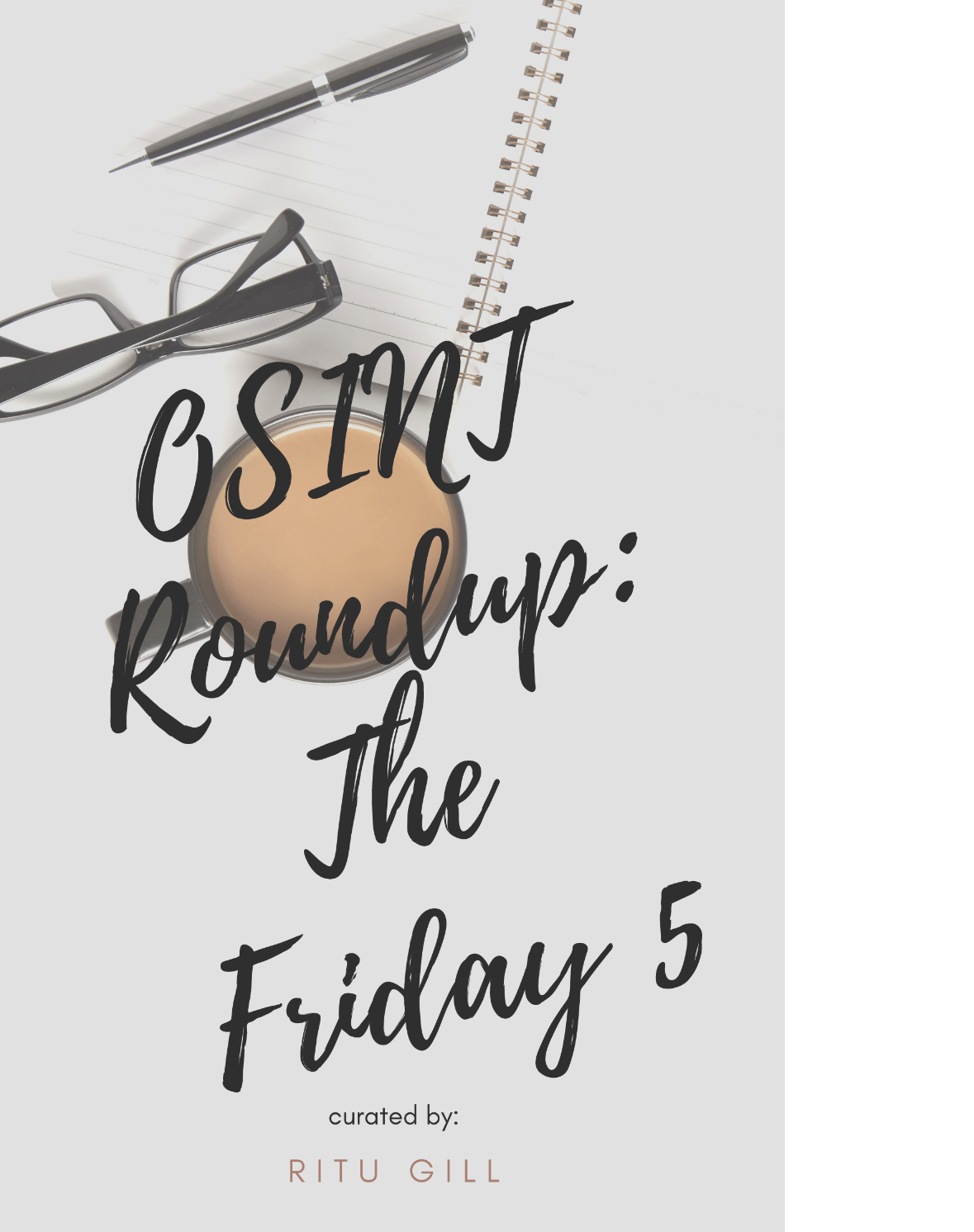Capture History: Avoid Duplicate Work and Investigate Smarter
The Capture History feature helps prevent wasted time and duplicate work by instantly showing if a page has already been captured — by you or someone on your team.
It’s especially valuable in team environments or during large investigations where several users may visit the same profiles, listings, or posts.

What It Shows
- Whether the page has been captured before
- Who captured it
- When it was captured
- What type of capture was performed (Full Page, Current Screen, or Continuous)
- Quick links to download the previous PDF or Full-Disclosure ZIP (if you have access permissions)
When It Works
Capture History is automatically available when your extension is connected to a backend — either On-Premise or Cloud.
- Shared Cloud API (Solo Users Only): You’ll see your own capture history, but not other users’ captures.
- Single-Tenant Cloud or On-Prem Backend (Team Use): Team members can view each other’s capture history and download previously saved evidence. (This is required to enable full team-sync features.)
Where to Find It
You’ll find Capture History within the Forensic OSINT toolbar:
- When you visit a page, the capture window will show the most recent capture date
- Clicking Capture History reveals:
- Who captured it
- The number of screens captured
- Type of capture used
- Download links to PDF or ZIP (based on your access permissions)

Example: Don’t Be Dave
In our stick-figure comic, Dave spends 16 hours capturing a Facebook profile… only to find Jamie already captured it the night before.
Capture History would’ve shown:
- Jamie’s name
- The capture timestamp
- Capture type and screen count
- Links to download the report instantly

Why It Matters
Capture History removes guesswork. You’ll always know:
- Has someone already captured this?
- Can I trust what’s already in the system?
- Is it faster to download or recapture?
This keeps teams aligned, saves hours of work, and ensures nothing is missed during fast-paced investigations.

Minimum Requirements:
- 8 Characters
- 1 Upper
- 1 Lower
- 1 Digit

